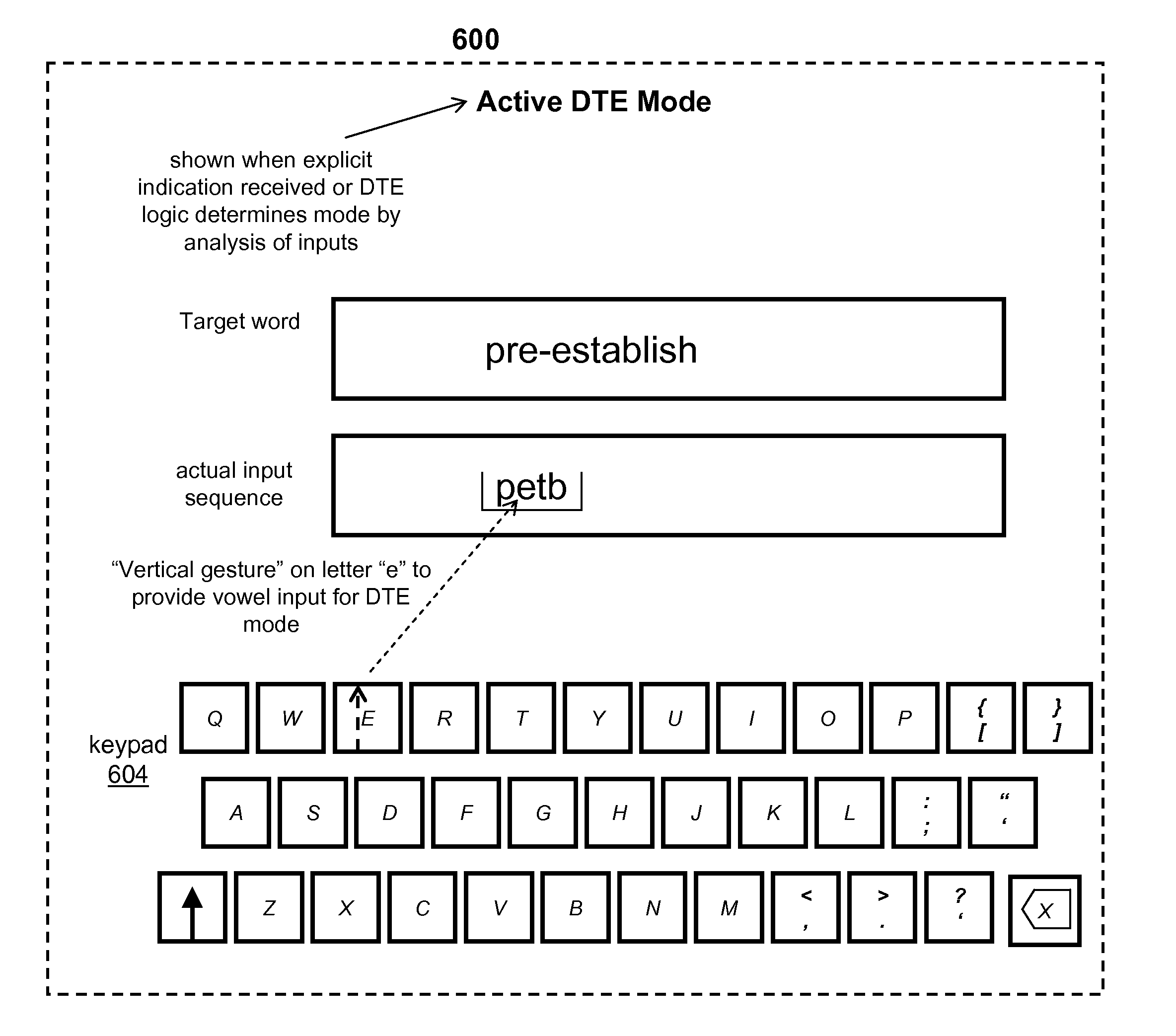Dynamic text entry/input system
a text entry/input system and dynamic technology, applied in the field of word prediction technology, can solve the problems of limiting the efficiency of the word completion mechanism, slow adaptation of the alphanumeric text and/or word entry mechanism to rapid improvements in processing capabilities/speeds, interactive features, etc., and achieve the effect of efficient provision of an input sequen
- Summary
- Abstract
- Description
- Claims
- Application Information
AI Technical Summary
Benefits of technology
Problems solved by technology
Method used
Image
Examples
Embodiment Construction
[0017]The present disclosure provides a method, system and computer program product for enabling a user to efficiently provide an input sequence to a electronic device, using an abbreviated / shorthand word format, in order for the device to generate a corresponding target word. A dynamic text entry (DTE) logic / utility detects an input sequence that is provided by the user. In one embodiment, DTE logic configures a DTE mode of the electronic device in which the user is able to provide a first letter of each syllable of the target word. DTE logic enables the user to explicitly activate the DTE mode. Alternatively, the DTE mode can be activated based on detected input sequences comprising a series of consonants and / or one or more unique input methodologies, such as providing at least one vowel input with a string of consonants or providing a character or icon input representative of a single word, phrase, or group of words. DTE logic determines whether DTE mode is active based on at lea...
PUM
 Login to View More
Login to View More Abstract
Description
Claims
Application Information
 Login to View More
Login to View More - R&D
- Intellectual Property
- Life Sciences
- Materials
- Tech Scout
- Unparalleled Data Quality
- Higher Quality Content
- 60% Fewer Hallucinations
Browse by: Latest US Patents, China's latest patents, Technical Efficacy Thesaurus, Application Domain, Technology Topic, Popular Technical Reports.
© 2025 PatSnap. All rights reserved.Legal|Privacy policy|Modern Slavery Act Transparency Statement|Sitemap|About US| Contact US: help@patsnap.com



